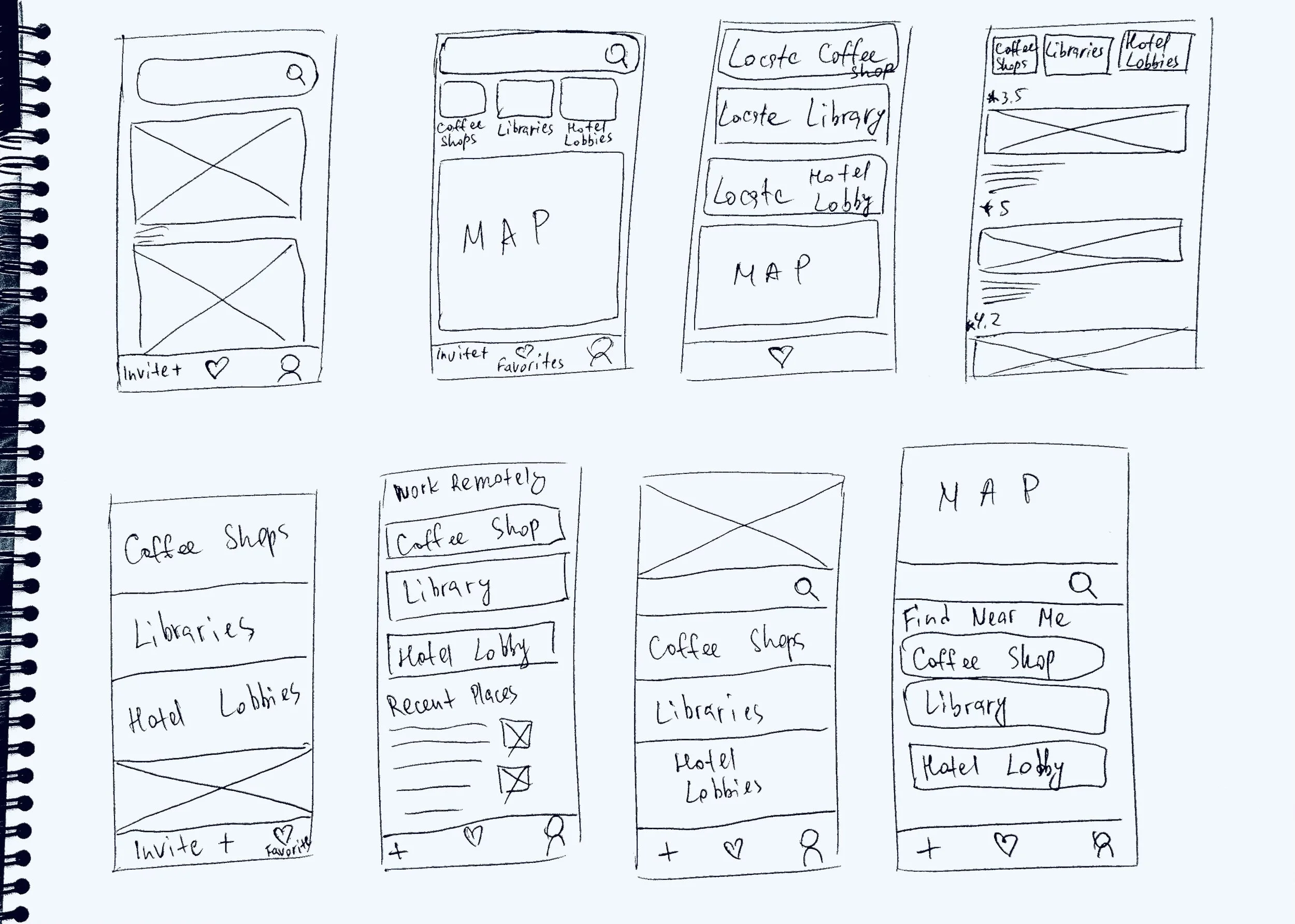GV DESIGN SPRINT
POST UP
The Remote Workspace Locator: Connecting Professionals to Ideal Environments
Many remote workers struggle to find suitable workplaces on the go. I joined PostUp for a modified GV design sprint, focused on helping freelancers discover great coffee shops and public spaces to work from. Our goal was to quickly test a potential solution. Understanding the importance of this project, I dedicated the next five days to exploring the challenge and developing a solution.
OVERVIEW
Day One - Map
On the first day, I reviewed research and mapped the user journey for finding suitable workplaces. User feedback revealed essential needs: quiet spaces for calls, fast Wi-Fi, accessible outlets, and restrooms. They desired app features like ratings, live peak hour tracking, visuals of locations, and purchase information.
PostUp aims to help remote workers quickly find nearby spaces—such as coffee shops, libraries, and hotel lobbies—for a $5.99 monthly subscription. I created a detailed map to visualize our goals and lay the groundwork for our solution.
Day Two - Sketching
On the second day, I sought inspiration from three mobile apps: Airbnb, Apple Maps, and Yelp.
Airbnb features an intuitive design with bottom navigation for easy access to favorites and appealing imagery.
Yelp excels with location services and straightforward navigation, offering helpful search options, reviews, hours, and images of venues.
Apple Maps allows users to visualize nearby locations and access detailed info with a simple click.
After gathering insights, I used the Crazy 8s method to sketch variations for the app’s critical screen. I reviewed these sketches to identify the most user-friendly design, ultimately creating a solution sketch that includes the screens before, during, and after the critical one.
Day Three - Decide
On Day Three of the sprint, I created a storyboard of additional screens to enhance the user experience. This step was crucial for visualizing the app’s flow and ensuring that every interaction was intuitive. I focused on key elements: a welcoming introduction, a location services activation screen, a critical search interface, options for remote places, and detailed info screens for each venue. These components were designed to streamline navigation and provide users with the information they need to make informed choices.
Day Four - Prototype
The following day, I focused on designing realistic facade prototypes for user testing. As I worked, I aimed to create an engaging experience by incorporating fun colors to energize users. My thought process centered on maintaining simplicity and ease of navigation, ensuring that users could intuitively interact with the app. I was eager to gather valuable feedback during the testing phase, particularly regarding usability, design elements, and the color theme, to refine the app further and better meet user needs.
Day Five - Test
I set up a prototype test at a local coffee shop, interviewing five participants working on their computers in exchange for free coffee, using the Five-Act Interview technique.
To kick off, I explained that PostUp is designed for remote workers seeking productive places to work, highlighting features like locating nearby coffee shops, libraries, and hotel lobbies. This user-friendly interface helps users quickly find reliable spaces with good Wi-Fi.
Feedback Highlights:
App Colors: Participants loved the green and purple combination, finding it vibrant yet easy on the eyes.
Navigation: Everyone appreciated the intuitive layout, which made finding locations straightforward and accessible.
Reviews and Ratings: Users found location reviews very helpful.
Favorites: Saving favorite spots was seen as a convenient feature for planning future work sessions.
This feedback is essential for refining the app to better meet user needs.
Overall, participants found PostUp to be an invaluable tool for remote workers seeking new environments. With a focus on coffee shops, libraries, and hotel lobbies, the app simplifies the search for nearby workspaces. Its engaging color scheme and user-friendly interface enhance the experience, making it a valuable addition to any remote worker's toolkit, despite some limitations in venue variety.
The GV design sprint process gave us vital user feedback, guiding us in creating a product that truly meets their needs.







